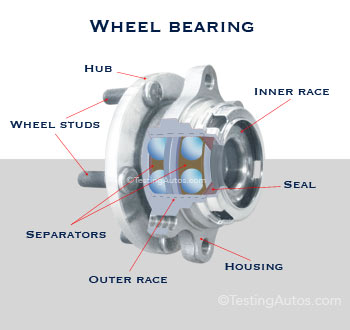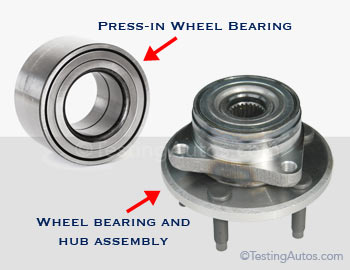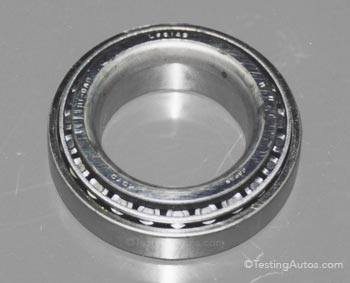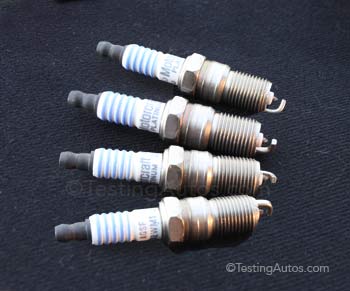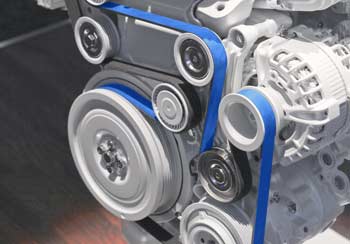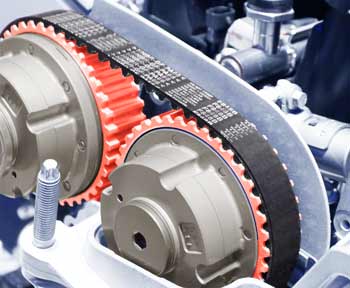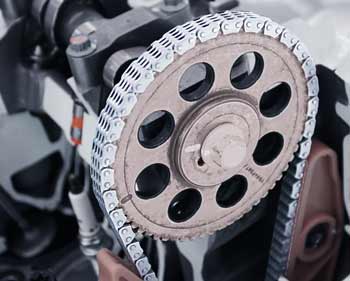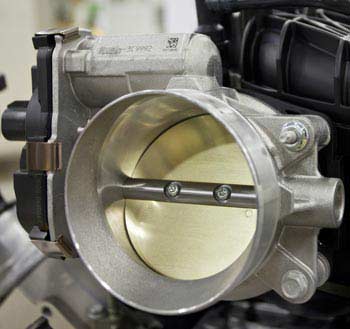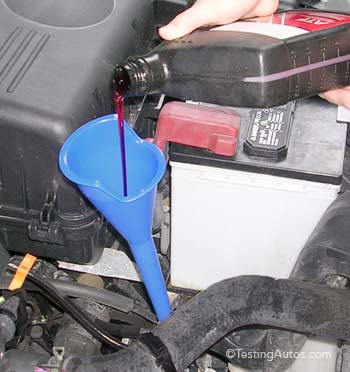When does a wheel bearing need to be replaced?
The wheel bearing in a car needs to be replaced only if it's damaged or worn out; for example, when it gets noisy or loose or when it causes the wheel speed sensor malfunction. In many cars, wheel bearings can last for the lifetime of the vehicle.The wheel bearing is the part that the wheel spins on. Depending on the type, each wheel has its own ball bearing or a pair of roller bearings.
The majority of modern cars, SUVs and pickup trucks have a single double-row ball wheel bearing at each wheel. This type of wheel bearing often comes as one unit with the hub (Bearing and Hub Assembly), as in this image.
What are the symptoms of a bad wheel bearing?
- Humming noise: The noise is more pronounced at higher speeds. It can get louder or quieter when the vehicle changes direction, for example, when merging or exiting the highway.
- The wheel feels loose: When the car is lifted on the hoist the wheel with a bad wheel bearing feels loose. A loose wheel bearing can also cause a squeaking or grinding noise.
The second half of the video shows the sound with a new wheel bearing.
Why does the humming noise of a bad wheel bearing change when the vehicle changes direction of travel? This happens because the load shifts from one side to another side of the bearing; the noise gets louder when the load shifts to the damaged side of the bearing.
Loose wheel bearing video:
Loose wheel bearing.
When the car is lifted, the wheel with a bad wheel bearing may feel loose like this one. Can a bad wheel bearing cause problems with the antilock braking system (ABS)? Yes, in many cars a tone ring for the wheel speed sensor (ABS sensor) is built into the wheel bearing. If the wheel bearing is loose, or if there is corrosion inside, the wheel speed sensor might not read properly, causing the ABS warning light to come on. In some wheel bearings, the tone ring is built into one of the side seals of the bearing. If the wheel bearing is installed with the wrong side facing the sensor, the ABS system will also not work.
If you suspect a bad wheel bearing, have your car checked. A humming noise when driving can be caused by a number of other problems, including a bad transmission bearing, unevenly worn or "cupped" tires and a worn-out differential.
Since the wheel bearing noise travels through the chassis and body of the vehicle, it's often difficult to pinpoint which bearing is noisy. In most cases, a mechanic can determine if a wheel bearing is bad by listening for the noise with a mechanic's stethoscope and checking for looseness.
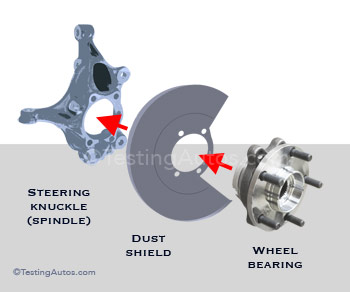 In many modern cars, the wheel bearing comes with the hub as an assembly. It bolts to the steering knuckle or spindle.
In many modern cars, the wheel bearing comes with the hub as an assembly. It bolts to the steering knuckle or spindle. Is it safe to drive with a bad wheel bearing? It depends on the condition of the bearing. Only your mechanic can determine this during an inspection.
Is the wheel bearing in a car covered by the warranty? Many manufacturers include the wheel bearings on the drive axle (e.g. front wheel bearings in a front-wheel drive vehicle) in the powertrain warranty coverage. Otherwise, wheel bearings are covered by the basic new car warranty. A bad wheel bearing might not be covered if it is damaged in an accident. Check the details in your warranty brochure.
Do you have to replace both wheel bearings if one is bad? No, it's not necessary. If only one wheel bearing is bad, only that bearing needs to be replaced. There is no need to replace a good wheel bearing as a precaution.
Can a wheel bearing be greased? Only tapered roller wheel bearings can be greased. A double row ball bearing found in most cars is sealed for life and can only be replaced if bad.
What is the average life of a wheel bearing? As we mentioned, in many cars wheel bearings can last the lifetime of a vehicle. In our experience, a vehicle might need one wheel bearing replaced within 150,000 miles. To make the wheel bearings last longer, watch out for potholes and drive slower over speed bumps.
How much does it cost to replace a wheel bearing? It depends on the labor involved. In many cars a wheel bearing comes together with a hub as an assembly. It bolts to the steering knuckle or spindle. In this case, it's easier to replace ($80-$180 labor plus $65-$180 part). In some cars a wheel bearing must be pressed into the steering knuckle or spindle with a press, which requires more labor ($120-$250 labor plus $40-$120 part). In some large SUVs and trucks, replacing a wheel bearing requires much more labor and is more expensive as a result. For example, replacing a rear wheel bearing in a Toyota FJ Cruiser with a solid rear axle can cost up to $1,200 parts and labor.
Tapered roller wheel bearings need to be periodically greased and adjusted. How to tell which type of bearings you have in your car or truck? Tapered roller bearings are mostly used on non-drive axles.
Advertisement
Is it easy to replace a wheel bearing at home? Replacing a wheel bearing that comes as an assembly with the hub and bolts to the spindle or steering knuckle is not very difficult if you have proper skills, tools and the manual. Of course, the large axle nut is very tight and can be difficult to remove. If the bearing requires pressing in and out, it's best to leave it to the pros.
